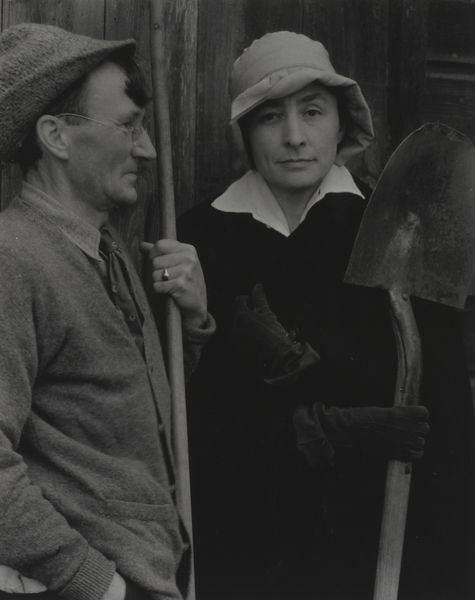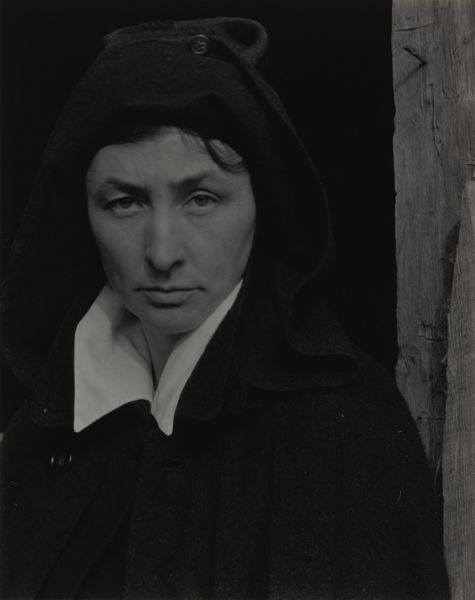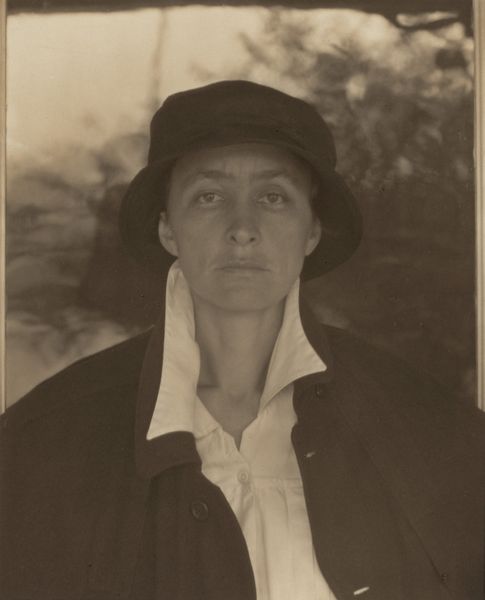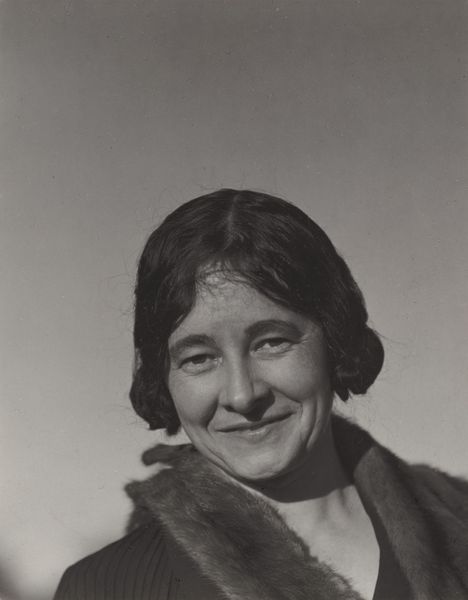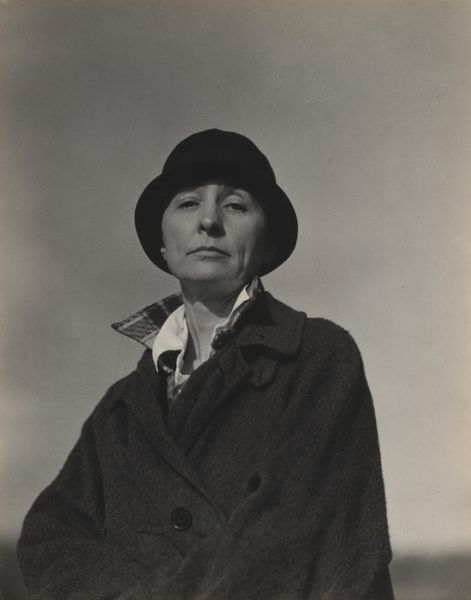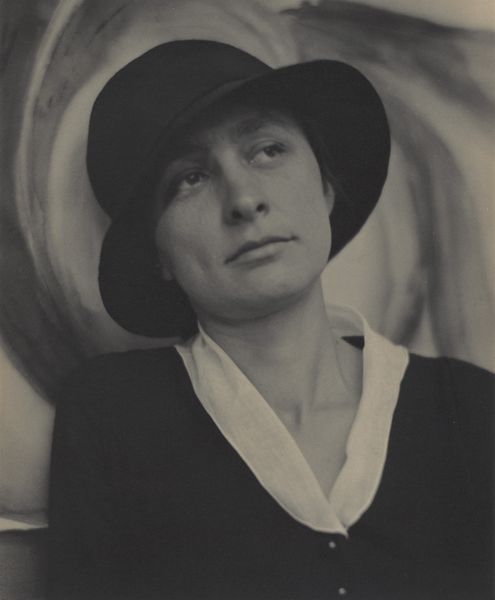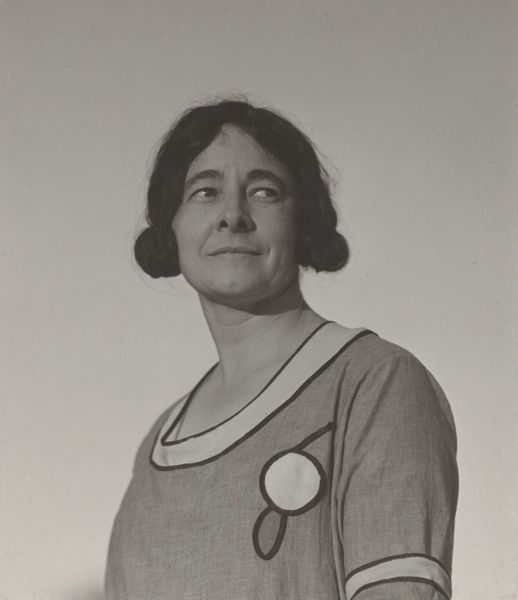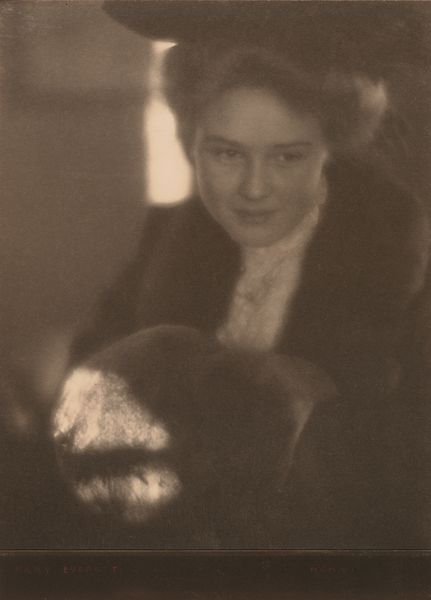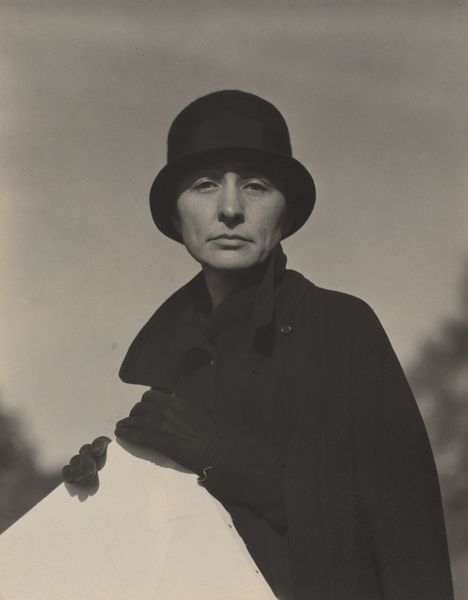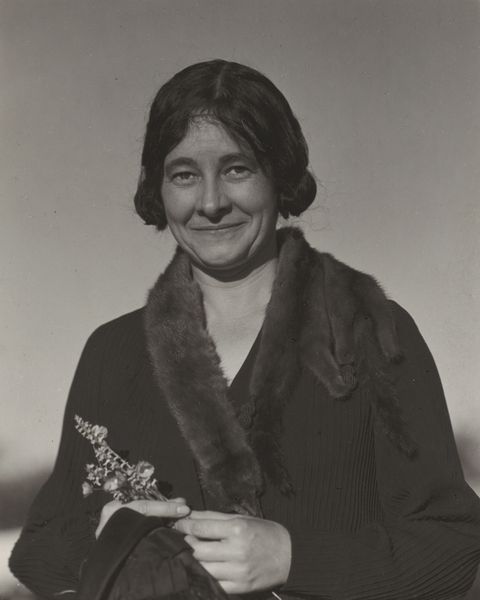
photography
#
portrait
#
black and white photography
#
pictorialism
#
photography
#
black and white
#
monochrome photography
#
monochrome
#
monochrome
Dimensions: sheet (trimmed to image): 11.2 x 9.2 cm (4 7/16 x 3 5/8 in.) mount: 34.3 x 27.6 cm (13 1/2 x 10 7/8 in.)
Copyright: National Gallery of Art: CC0 1.0
Editor: Here we have Alfred Stieglitz’s photographic portrait of Georgia O’Keeffe from 1924. It’s a black and white image, and she’s holding a shovel… it strikes me as surprisingly…grounded. How do you interpret this work? Curator: This image carries considerable weight, especially when considered within the Stieglitz's series of O'Keeffe portraits. The shovel becomes a symbol of labor, of creation tied to the earth. In European iconography, the shovel is the attribute of the gravedigger. Could this portrait symbolize the entombing of his previous relationship? The death of an idea, a style? Or an older vision of Georgia? Editor: That's interesting! I was focused on O'Keeffe herself, seeing it as an unusual portrayal given her association with those ethereal, almost otherworldly flower paintings. It’s not what one might expect. Curator: Exactly! The earthiness is key. Consider how often the earth serves as a maternal symbol, and link that to the idea of creation and rebirth, something central to O'Keeffe’s work and persona. It speaks volumes about the construction of her artistic identity and how she wanted the world to perceive her. The portrait is less about representing likeness and more about using likeness to reflect his feeling towards her. What do you think it means to portray one's feelings by projecting objects or other things onto another's image? Editor: That's a new way of thinking about portraits for me. Seeing it as less about a person's appearance, but as an exercise in revealing someone else's intentions. Curator: Yes, every element here—the light, the angle, the very presence of that shovel, it tells a story about cultural memory, not just a physical description. Now how does the handle pointing to her torso complicate these possible symbolic frameworks? Editor: This makes me realize the extent to which portraiture can be a form of constructed narrative rather than objective fact. I guess I thought of O’Keeffe in purely artistic terms, but seeing her in this intimate, grounded light creates a really different impression. Thanks!
Comments
No comments
Be the first to comment and join the conversation on the ultimate creative platform.
